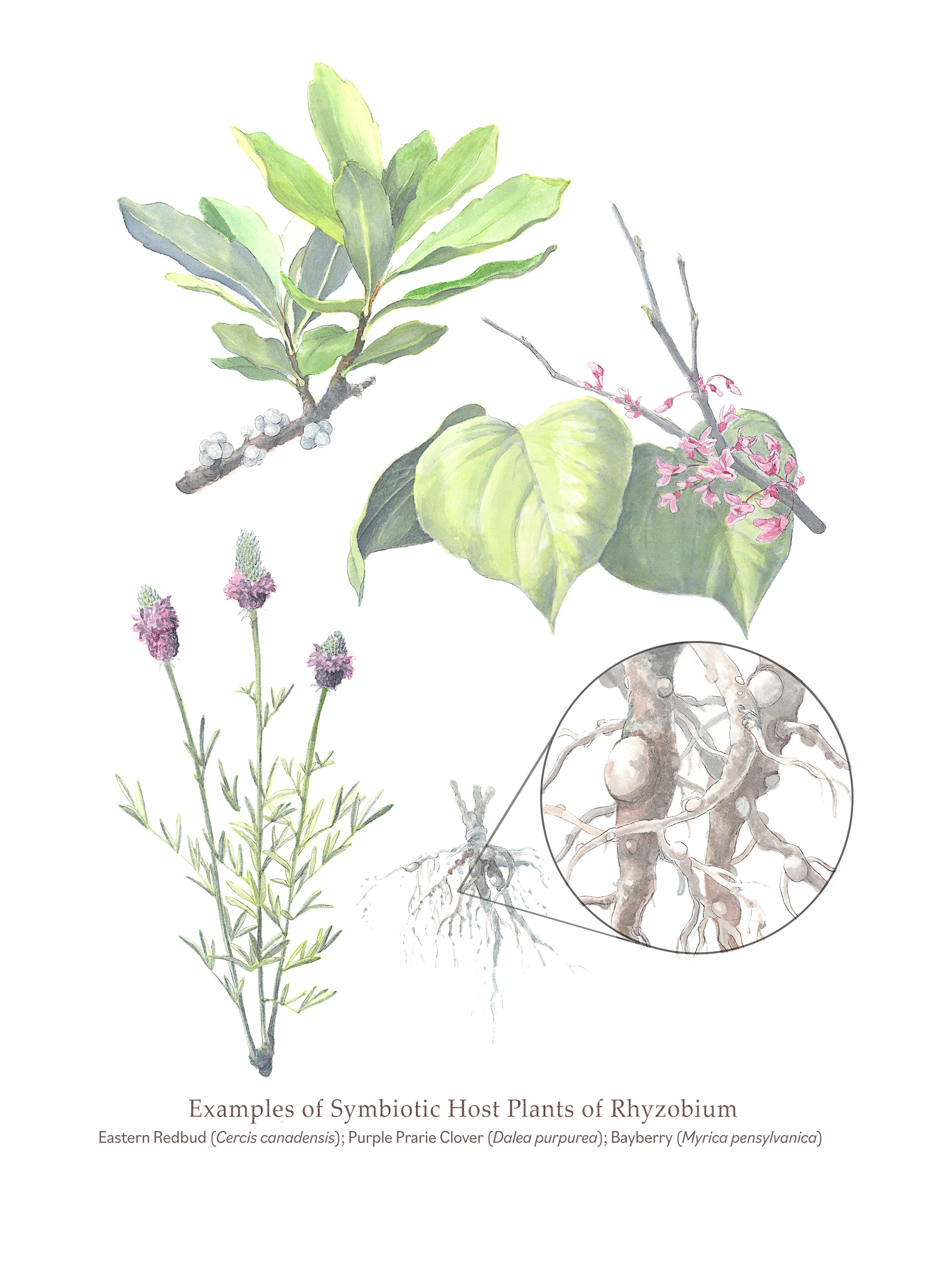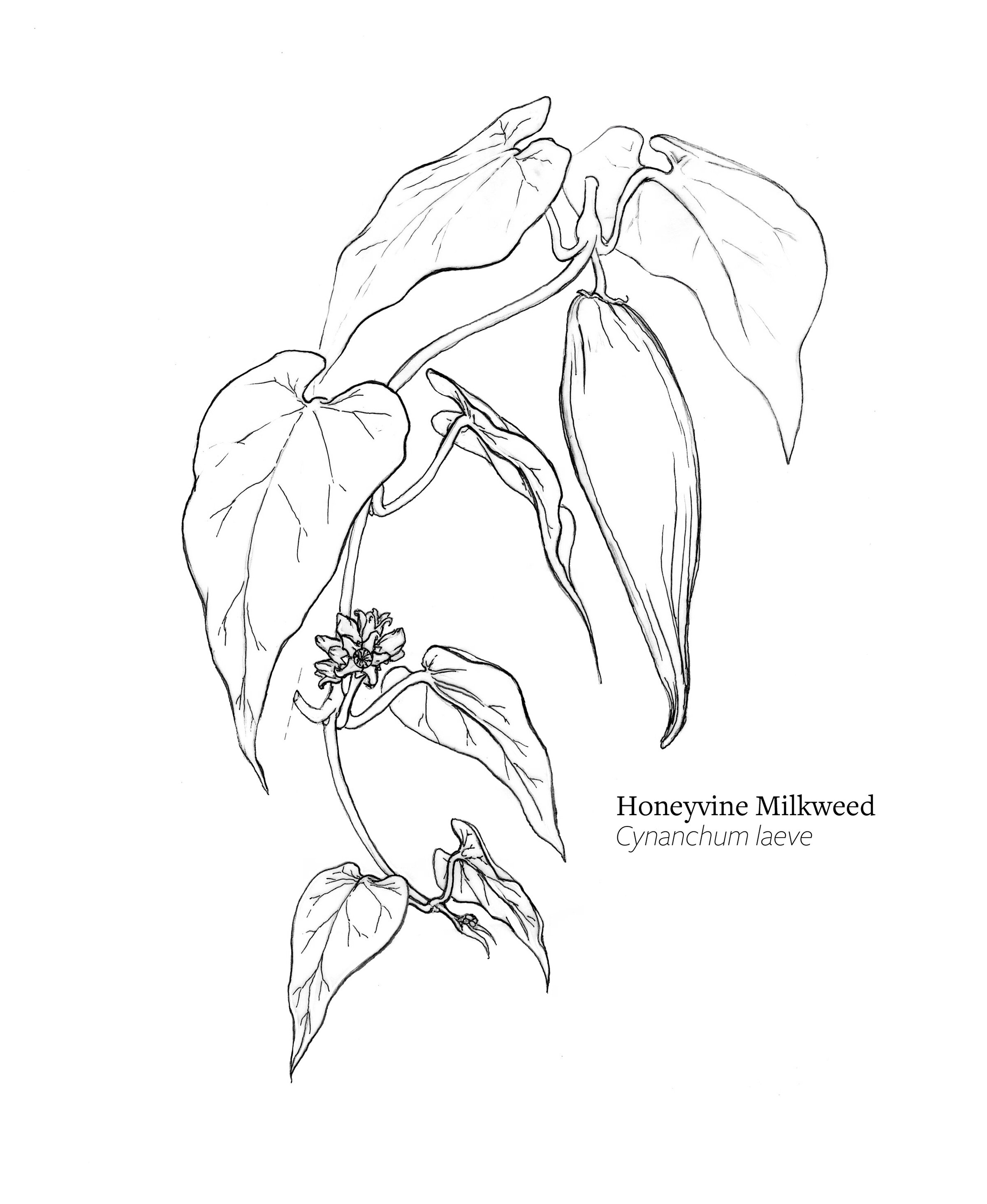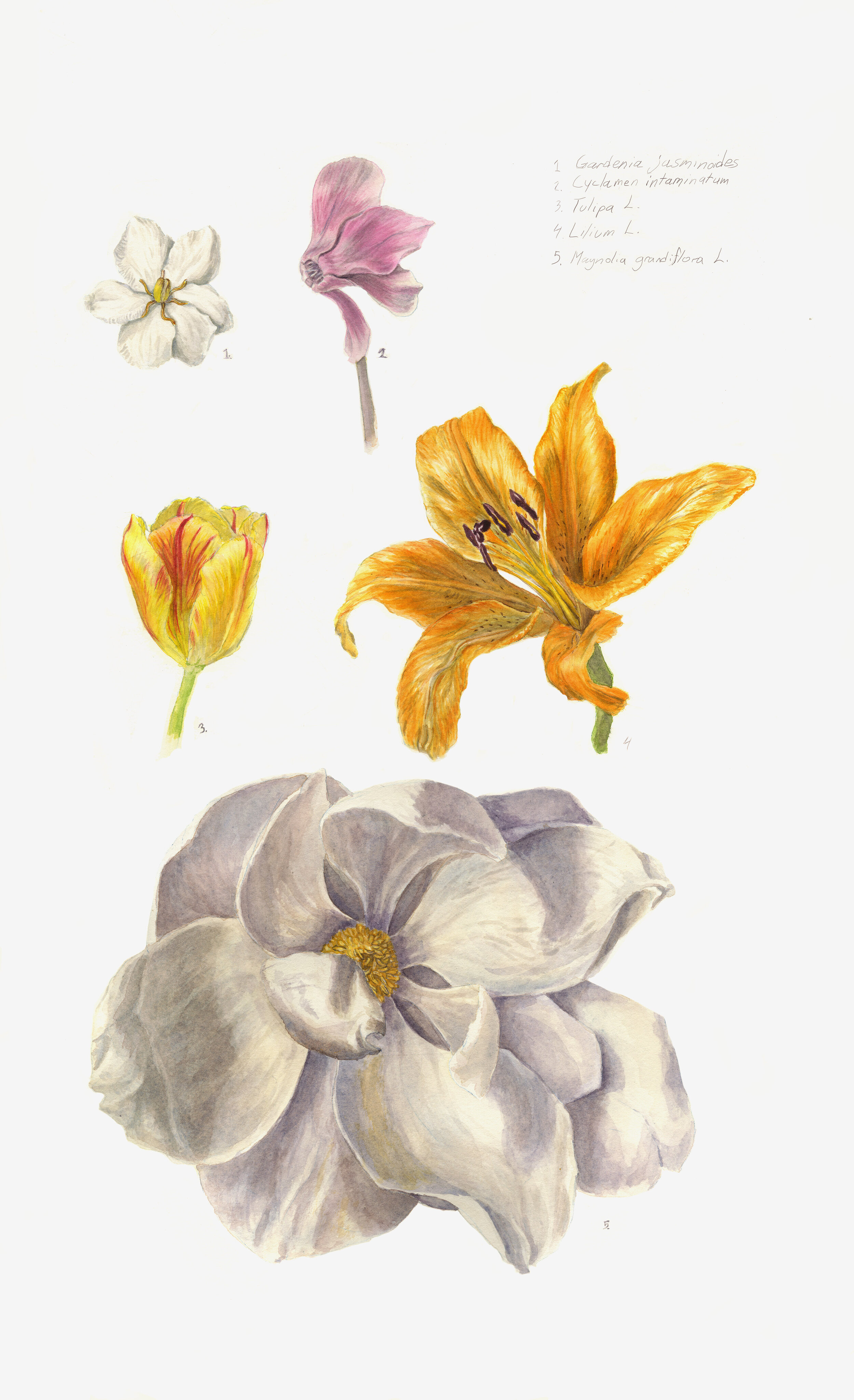Traditional Artwork
(click images to view full resolution)
Portraits of Three Rhizobium Host Plants. Watercolor on 300 lb Hot Press. Poster also depicts the host plant's root systems covered in cysts caused by abrasions of the symbiotic bacteria eating their way into the roots.
Lake Sturgeon (Acipenser fulvescens) Adult and Juvenile. Ink on Scratchboard. This endangered species is native to the great lakes region and can grow up to 7 feet long. Their unique snout shape allows for them to effectively hunt for small animals living under the surface of the lake or river bed. The juveniles begin life covered in protective scoots that eventually become separated by smooth skin as they grow into adults, causing a drastic change in appearance as they mature. Currently on display at the Biosphere exhibition at Kokomo Downtown Gallery in Kokomo, Indiana
Watercolor on paper, digitally edited. 13”x13” Before being driven to extinction in the early 1900’s the Carolina parakeet (Conuropsis carolinensis) thrived all throughout the Eastern and Midwestern United States. They loved to eat nuts, seeds and fruits, including the seeds of the toxic cocklebur that is also pictured. The birds were largely unaffected by the toxins in the seeds, and also managed to become toxic themselves if they consumed enough.
Persistent Growth. Watercolor and pencil on illustration board. Ground ivy (Glechoma hederacea) is an invasive plant from Europe that is found in much of North America. Here leaves of ground ivy are seen not only growing but thriving in patches of snow in the middle of a Chicago Winter. Despite their edibility, it is best not to snack on plants found in urban environments as they are often sprayed with herbicide [in vain].
Honeyvine milkweed (Cynanchum laeve) is native to the great lakes region of North America. Unlike its relatives, this species of milkweed grows as a vine.
Grabbing Some Lunch. Watercolor on Arches 300 lb paper. Kirtland’s snake (Clonophis kirtlandii) is known for its bright red belly scales and its small size. Their rarity provides them a spot on the endangered species list for every state it is found in. They are oftentimes only as long as your forearm (about 14 inches) and eat primarily worms and slugs. In order to navigate through water they are able to flatten their bodies and chase down juvenile frogs like the one in this painting.
Bobolink. Color pencil on Duralar. This migratory bird is one of hundreds of endangered species of North America. It is known to migrate as far as South America for the colder months.
Aquarist’s Toolkit (New ‘Scape Prep). Gouache on 300 lb paper. Prepared workspace for an afternoon well spent planting new foliage and rearranging driftwood in a hobby fish tank.
Checkered Lily Dissection Plate. Watercolor and ink on paper.
Horse Cervical Vertebrae. Graphite on coquille. [sold]
Wabikusa Construction and Planting. Ink on bristol.
Tillandsia ionatha Dissection and Study. June 2020. Watercolor. Examination of trichome and flower structure of Ionatha.
Red Tailed Hawk Pair. January 2020. Watercolor on Clayboard.
Reclamation of White Ditch Creek. June 2020. Watercolor. Environmental study of a flooded creek located in southwest Michigan.
Sooty Owl Pair. December 2019. Watercolor on Clayboard.
Midwestern Marsh Enviromental Study. 2020. Watercolor
Pre- 2020
Various Leafs Study. 2013. Watercolor
Wolf Spider Perspective Study. 2014. Carbon Dust on Vellum
Machairodus giganteus Reconstruction. 2014. Carbon dust and color pencil on vellum.
Various Flowers Study. 2014. Watercolor
Eucalyptus Study. Carbon Pencil and Dust on vellum Winter 2016
Phalaenopsis Study. 2014. Watercolor










![Horse Cervical Vertebrae. Graphite on coquille. [sold]](https://images.squarespace-cdn.com/content/v1/5f14cc935e2c117be49f07fb/a112b24b-54f1-447f-b48c-95b11155087c/vert_web.jpg)














